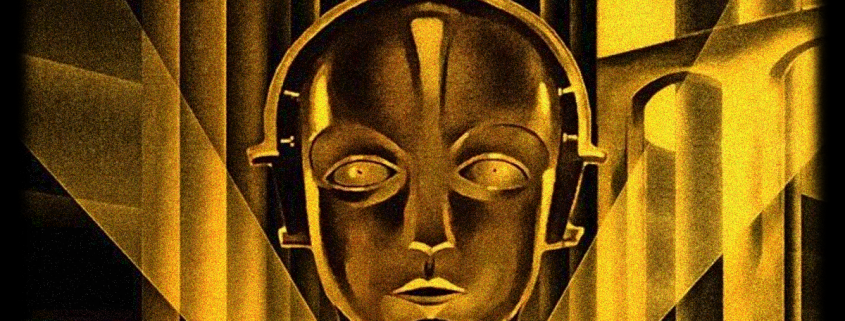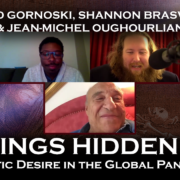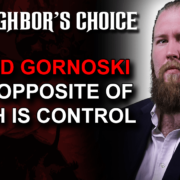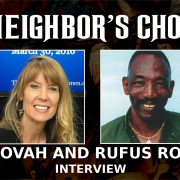Metropolis – A Film Analysis
Very few films have defined a genre. One of these films is the 1927 German silent movie Metropolis. Directed by legendary filmmaker Fritz Lang, Metropolis is a dystopian sci-fiction movie that touches on important socio-political and even theological aspects of modern society. Made during the Weimar era—a time when Germany was in political and economic turmoil, and when cities often witnessed street battles between communists and fascists—the movie manages to be relevant even today as it was then. Why? This is something that we will try to understand as we analyze some of the movie’s key characters and narrative points.
The opening scenes depict the underground-dwelling workers of an enormous unnamed city toiling away at ambiguous machines that keep the city alive. After their ten-hour shifts of grueling manual labor, these crestfallen workers descend to the depths and limp away to their homes. We then move heavenwards, to the roofs of the skyscrapers, where the children of the rulers and the powerful play and enjoy gardens and private arenas. It is here where we meet our hero: a young man named Freder, who is the son of the city’s master, Joh Fredersen.
The setting makes visible the sharp class divide that exists in the city, and this divide has parallels to our own modern-day urban life. The cinematography perfectly utilizes the workers’ robotic movements to make them appear as extensions of the machines and ultimately non-humans—others. This divide of the classes and the other-izing of a segment of the city’s population gives the impression that something is lacking in society, and this lack gives way to a shattered and unbalanced way of life. Again, this is analogous to our real-life urban existence.
It is because of this missing component that our society is divided into warring factions who look to sacrifice one another to produce the perfect society. The working class and ruling class divide gave rise to Marxist thinking, something that the film addresses, albeit in a fragmented way. Marxist theory is a derivation of Hegelian thought, that society evolves through dialectical struggle and through revolution which produces a fair and desirable state of being. This struggle that Marxism describes is a variant of mimetic warfare—conflict that ends in human sacrifice and false hope for a better future.
Young Freder, during one of his escapades in the gardens, is dumbfounded at the appearance of a character named Maria and several children of the workers whom she has brought along with her. “Look, children,” Maria says, pointing to the sons and daughters of the wealthy rulers, “these are your brothers and sisters.” Maria is the Christ-Marian archetype of the story. She is the unconscious Christian insert by the writer Thea von Harbou, unconscious because her character is produced as a figure of innocence and beauty, and also because she inadvertently leads a curious Freder to the horrors of the underground machines of the city.
In the underground, Freder witnesses firsthand the anguish-ridden existence of the workers. One of the machines explodes when a worker fails to tend to it in time. Freder is thrown back by the explosion and he then hallucinates the gigantic head of Molech swallowing bound slaves and the workers who walk into the monster’s mouth in defeat. This entire sequence of events is an unconscious retelling of the Passion story in the New Testament. The Marian-Christ figure leads the pagan who is steeped in mythology into the reality of misery faced by the unquestioning innocents, and by doing so she unveils the ritual human sacrifice that sustains society. The shock treatment of this revelation opens Freder’s eyes. His world will never be the same again.
We are again brought back to this missing component—this absence of a bridge between the ruler and the ruled. The incomplete state of Metropolis means that violence links and sustains society and as a result, Molech—the Canaanite god of human sacrifice—swallows those who fail to do their work properly. The missing component means that natural law reigns in all its Darwinian glory. Might makes right! Human beings are mutated into lifeless and disposable machines. Such a society is bound to fail because it relies on an endless supply of scapegoats; Joh Fredersen denies this reality when his son rushes to tell him of the suffering of the workers.
Fredersen ignores his son’s plea for mercy. He recognizes that the expulsion of workers to the depths is a necessity, and this necessity—this myth—must not be broken or everything will fall apart. The later parts of the story prove him to be partially right. Fredersen is not overjoyed or passionate at this recognition; indeed, he is concerned about his son. He is, after all, faced with a dilemma as are his real-life counterparts. He must either choose the path of expulsion and keep the city running as he is obligated to or he can break the religious structure and risk an inversion of the hierarchy or, even worse, a war of all against all.
But Fredersen does not realize that there is a third way, and this way is discovered by his son Freder who voluntarily exiles himself to the underground and takes on the role of a worker himself. Freder discovers that the workers, after their shifts, go to the catacombs and devoutly listen to Maria who preaches about a coming ‘mediator’—a heart that will bring together the mind (the rulers) and the hands (workers). Maria explains this need for a mediator through a revisionist telling of the tower of Babel story wherein she claims that the tower could not be completed because of discord between the slaves and the chief planners.
So here we are told what the missing component is and what needs to be done to achieve equilibrium. Unbeknownst to Thea von Harbou, who was really pointing to a charismatic leader to fill in the role of the mediator, she is unconsciously arguing for the sovereign rule of a divine king, and not just any king but a king who is uniquely redeeming, non-violent, and persuasive through voluntary discourse. This king in all certainty is Jesus Christ. It is Christ who fulfills the unraveling of pagan mythology—the violence that serves as the foundation of cities. And it is Christ who, upon his advent, achieves the role as the perfect mediator and the perfect role model.
Also, the characters of Maria and Freder themselves are an indication of Christ in the world of Metropolis. Maria emerges from the place of the workers, therefore she represents, in a sense, Christ’s human nature. Freder comes from the place of the wealthy and the powerful; he represents the divine nature of Christ. The two natures sometimes overlap between the two characters. It is no wonder that both fall in love with each other, thus symbolizing the spiraling unity of the divine and the human in bringing about redemption to the world. From here onwards, after Maria almost supernaturally recognizes that Freder is the promised mediator, Freder and Maria work together to save Metropolis.
Next, we are introduced to the iconic machine-person and its creator, the mad scientist Rotwang whose name translates to ‘red cheek.’ Rotwang is the mimetic double of Fredersen. He was once a close friend of Fredersen but later becomes a rival due to his pursuit of Fredersen’s now-deceased wife Hel. The character of Rotwang ends up as a scientist who, in his model-obstacle relationship with Fredersen, attempts to play God. A scientist who ‘plays God’ is typically one who lacks any intention of preserving the life-affirming goal, i.e. healing of human life, given to science by the Gospel revelation.
One sign of the mad-scientist archetype is his act of creating an artificial being that rivals humans who are God’s creation. Rotwang’s creation is the Maschinenmensch—the machine-person. This machine-person takes on the likeness of Maria to lead the workers and eventually the whole city into a state of disarray. The machine-person is depicted as the ultimate scandal generator. She is comparable to the array of Christ substitutes—false Christs—that exist in our modern day societies. She is presented by Rotwang to the elites as a prostituted savior, a corrupted messiah who sells herself as a glittering object of desire and scandalizes society as a result.
The machine-person causes numerous rivalries and deaths amongst the elite. Those who burn in lust for her end up competing and fighting over her, thus killing rivals in fistfights and duels. The machine-person’s real-life counterparts are the various socialist, Marxist, and other such radicalized political and cultural movements that present to us numerous false-Christs—charismatic figures that claim to fight for victims but end up scandalizing society in an attempt to erase differentiation.
One characteristic of a false-Christ is his/her claim of protection of victims through violence. In order to fight evil, a false-Christ will always urge the use of violence, equal or greater than the perceived offense. This is made all the more clear when the machine-person impersonates Maria at the catacombs and sends the workers into a revolutionary rage by urging them to “destroy the machines.”
Freder recognizes the machine-person as an impersonator. “You’re not Maria!” he says, “Maria spoke of peace—not violence!” His words fall on deaf ears as the crowd turns on him before proceeding to wreak havoc on the machines that run the city. The crowd dances around the ruins, not realizing that the destruction has caused severe flooding of their own homes with their children inside. This scene is an obvious indication of the cannibalizing nature of violent revolutions. If there is violence, it will eventually come back one way or another. Such is the nature of violence.
Fortunately, Maria and Freder, who just narrowly escaped lynching by the crowd, join together and save the workers’ children from drowning. The children here represent the non-violent victims who fall in the crosshairs of mob persecution, emboldened in our world by unjust laws. We have numerous real-life examples: the millions murdered under the communist and fascist regimes, the separation of families due to the “war on drugs,” the drone attacks on innocents in the so-called war on terror, and the list goes on. Maria and Freder’s actions here are the only valid Christian response that we can take in the face of tyranny and mob persecution: the imitation of Christ which leads to the salvation of victims and the total rejection of the scapegoat mechanism.
Admittedly, the movie falters when it kills the primary antagonists, the machine-person and Rotwang; the former in a literal witch-burning by a crowd that has recognized the deception. Again, we must keep in mind that the narrative treats violence and the scapegoating ritual in a fragmented manner. The writer, not a Christian in any sense, had unconsciously inserted the anti-scapegoating segments as a result of the post-Calvary revelation—the innocence of the one persecuted by the many—that has haunted and continues to haunt the European psyche. Where the movie succeeds brilliantly is the salvation of the children of the workers and the resulting peace it manages to achieve between the workers and Joh Fredersen.
Upon the appearance of Fredersen, the crowd is poised to lynch him but they are made aware of the fact that it was Fredersen’s son who has rescued their children. Fredersen and the workers shake hands, solidifying peace in Metropolis and symbolizing the victory of mutual consent over tyranny. The message is overwhelmingly true: it is salvation and redemption that joins society together, not scapegoating. “There can be no understanding between the hand and the brain unless the heart acts as mediator,” Maria says. In a Calvary-haunted society, it must be argued that the heart cannot be anyone else other than Christ. Fritz Lang and Thea von Harbou managed to recognize the power of the Gospel narrative in binding society together, and so should we.










Leave a Reply
Want to join the discussion?Feel free to contribute!